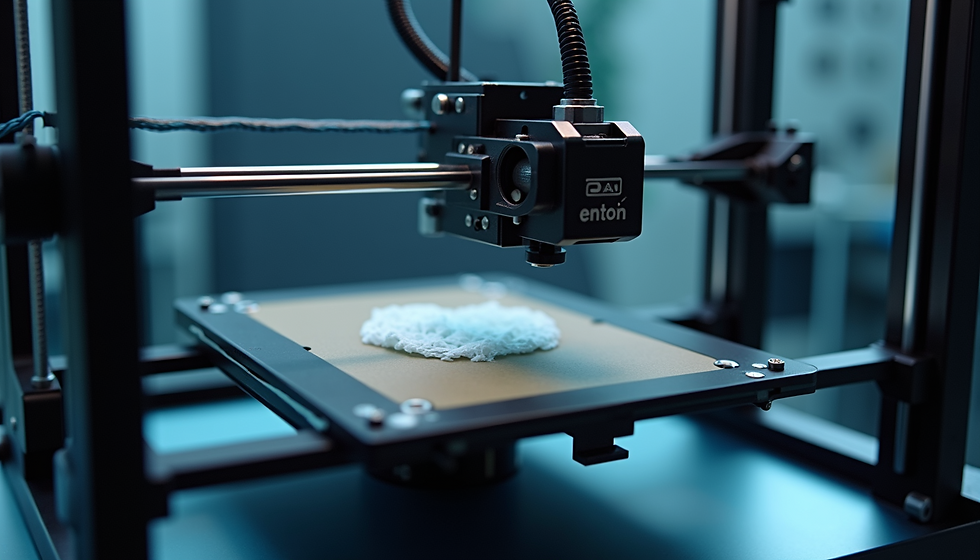Tips for Organizing and Optimizing Your 3D Printing Files
- Mesh Mayhem
- Jun 19
- 4 min read
Updated: Jun 23
3D printing is a revolutionary technology that allows for endless creativity and innovation. However, as you dive into the world of 3D printing, the number of files and the complexity can quickly become overwhelming. Proper organization and optimization of your 3D printing files can save you time and reduce frustration. This blog post will provide you with practical tips to efficiently manage your 3D models, so you can focus on bringing your ideas to life.
Understanding 3D Printing Files
3D printing files come in various formats, including STL, OBJ, and G-code, among others. Each file type serves a distinct purpose in the 3D printing process. For example, STL files are typically used for modeling geometry, whereas G-code files are specific to the printer's commands.
Understanding each file type is essential for effective organization. Start with a clear comprehension of what each file does to categorize your files correctly. This clarity will help you maintain a neat library of your digital assets and avoid potential printing errors.

Organizing Your 3D Printing Files
An organized filing system is crucial to streamline your printing workflow. Here are tips to help you structure your files effectively.
Create a Folder Structure
Consider creating a nested folder structure on your computer or external drive. This can include main folders such as:
Projects: For individual project files.
Models: For the 3D models you download or create.
Textures: For any additional texture files associated with your models.
Print Settings: To save specific G-code configurations relevant to different models.
This method of organization ensures that you can quickly locate files without sifting through a chaotic directory.
Use Descriptive File Names
Instead of using generic names, opt for descriptive titles that reflect the content of the file. For example, instead of naming a file "Model1.stl," you could use "Vase_Design_Simplified_v1.stl." This makes it easier to identify files at a glance and reduces the time spent searching for specific files.
Implement Version Control
Version control is especially useful when iterating on designs. Each time you make a significant change, save the file as a new version. For instance, if you're working on a character model, name the files like this:
Character_Model_v1.stl
Character_Model_v2.stl
Character_Model_v3.stl
This way, you can trace back to previous iterations if something does not work as expected.

Optimizing Your Files for 3D Printing
Once you have organized your files, the next step is optimization. Optimizing your 3D printing files ensures that they are ready for print, reducing wasted materials and time.
Check for Errors
Many software tools can help you analyze your STL files for errors. Running a check can fix issues such as non-manifold edges and inverted normals, which can cause failed prints. Use applications like Meshmixer or Netfabb to identify and correct these problems.
Reduce File Size
Larger files can slow down your slicing software and increase printing times. Consider optimizing your models to reduce file sizes without sacrificing quality. Techniques like reducing mesh density or using decimation tools effectively decrease file sizes while maintaining visual integrity.
Choose the Right Print Settings
Tailor your slicing settings to match the complexity of your model. For simple designs, you can lower the infill density and layer height. For intricate models, consider higher infill percentages and layer heights to achieve finer details. Each model may require different parameters, so having a set of typical profiles would be useful.

Backing Up Your 3D Printing Files
Backing up your files is an essential part of file management that can save you a great deal of trouble later on. Here's how to ensure you never lose your precious files:
Cloud Storage Solutions
Consider using cloud storage solutions such as Google Drive, Dropbox, or dedicated 3D printing file hosts. This not only provides extra space but also allows you to access your files from multiple devices.
External Hard Drives
For more extensive backup needs, external hard drives are a great option. Schedule regular backups to create an additional layer of security against data loss.
Version Control Systems
If you’re serious about managing multiple versions of your files, consider using a version control system such as Git. This will allow you to keep detailed records of changes made to your files over time and easily revert back to previous versions if necessary.
Exploring Resources for 3D Printing Files
Lastly, it's important to explore the wealth of resources available for 3D printing files. Websites like mesh mayhem offer a plethora of downloadable models, textures, and community insights that can enhance your printing experience. Engaging with online communities, forums, and 3D printing groups can provide additional tips and tricks, as well as valuable feedback on your designs.
Remember, the 3D printing landscape is expansive. Staying connected with others can open doors to collaboration and innovation that you may not discover on your own.
Final Thoughts
Organizing and optimizing your 3D printing files is a straightforward yet crucial step to elevating your printing projects. A systematic approach will save you time, reduce errors, and ultimately lead to a more enjoyable 3D printing experience. By implementing the strategies discussed in this post, you can take full advantage of the creative possibilities that 3D printing offers. Happy printing!




Comments